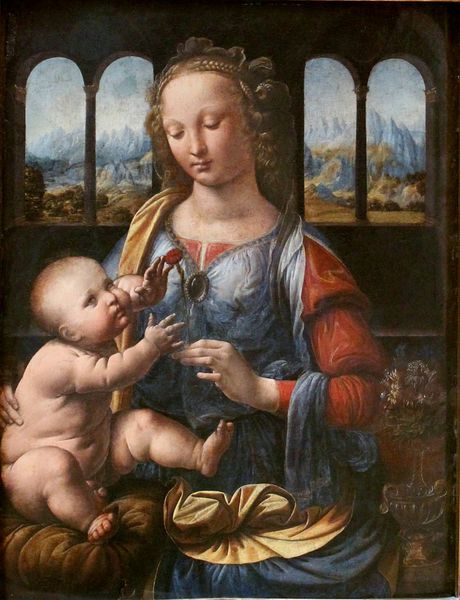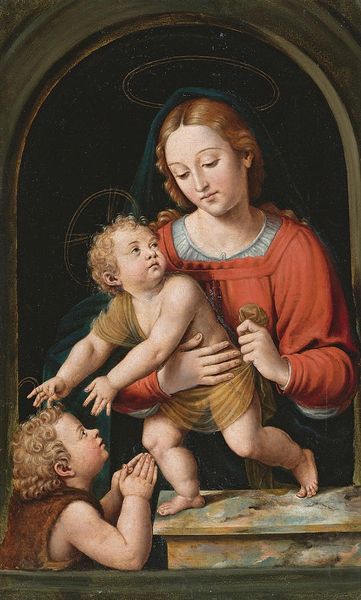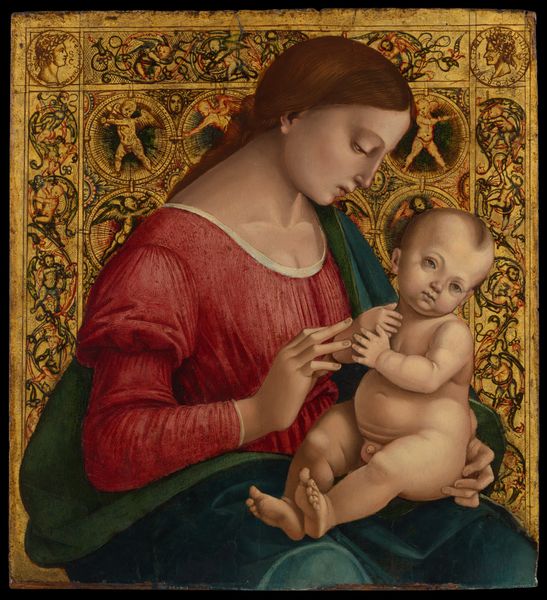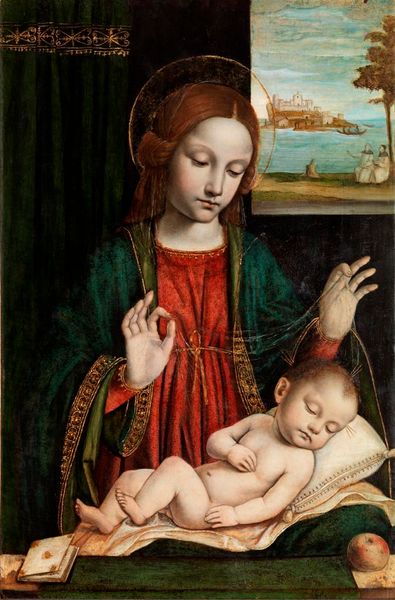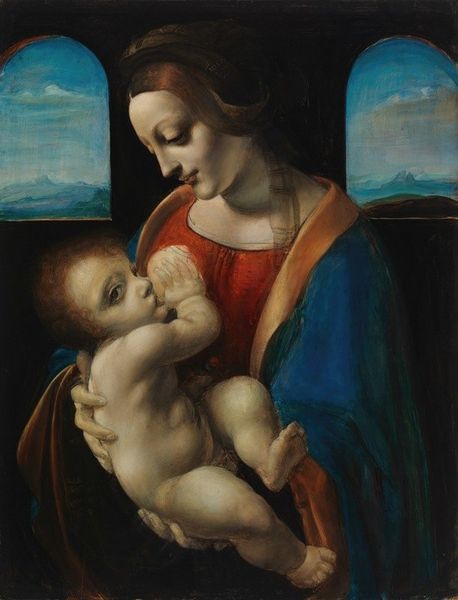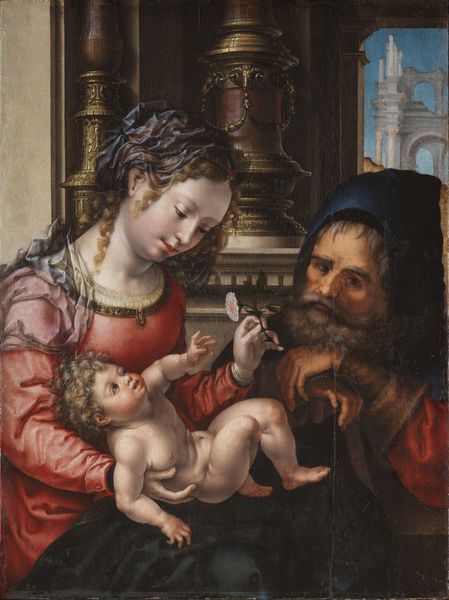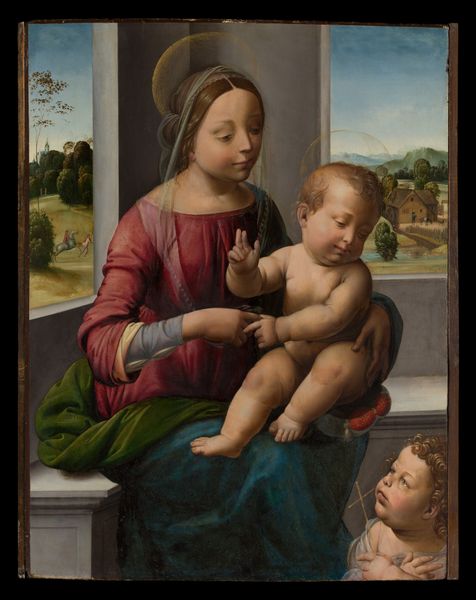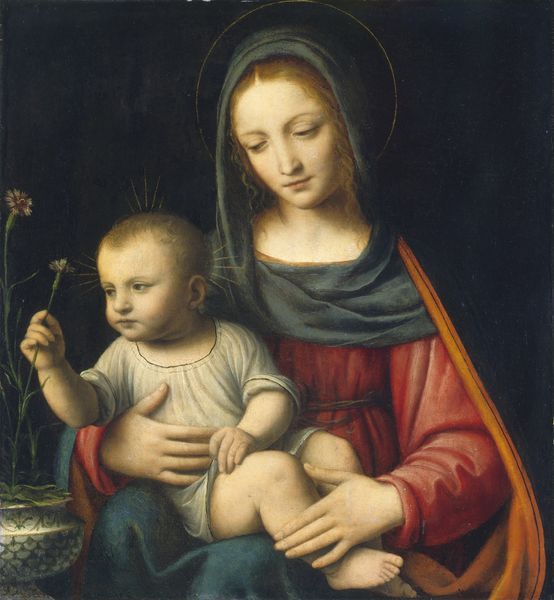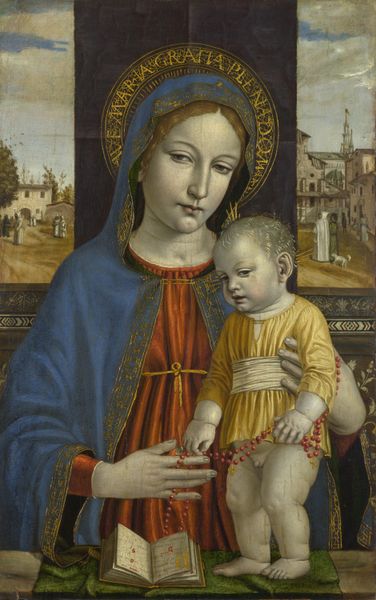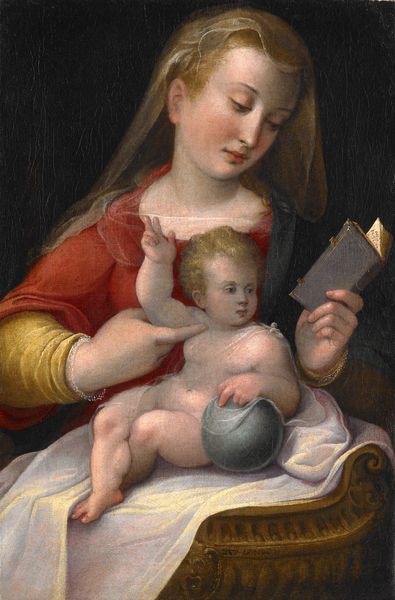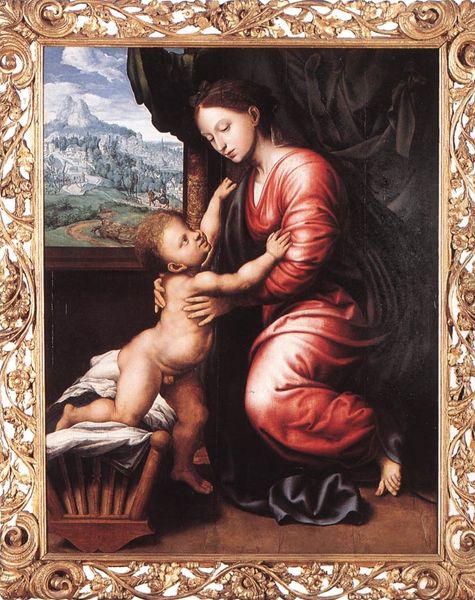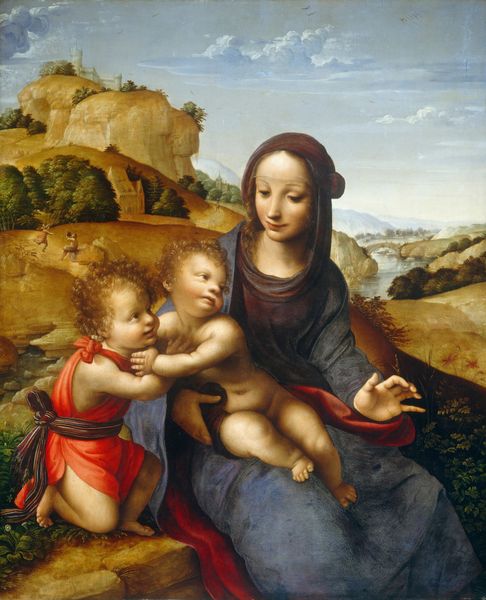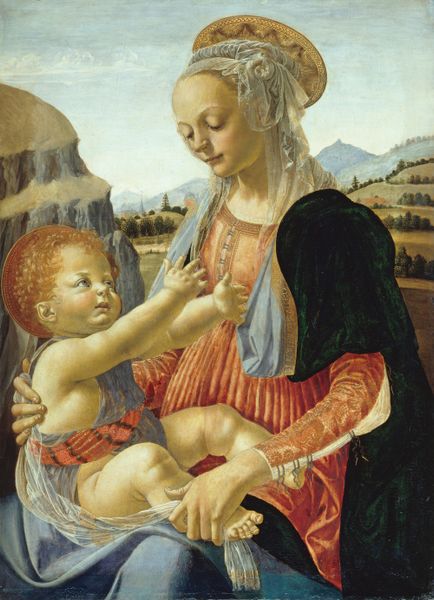
painting
#
portrait
#
high-renaissance
#
portrait
#
painting
#
child
#
portrait head and shoulder
#
christianity
#
italian-renaissance
#
virgin-mary
Dimensions: 33 x 49.5 cm
Copyright: Public domain
Curator: Standing before us is Leonardo da Vinci’s "Madonna with a Flower," also known as the "Madonna Benois," painted around 1478. It resides at the Hermitage Museum in Saint Petersburg. Editor: It strikes me as an unusually intimate portrait. There's a tenderness in the figures, almost a playful quality. And look at that light! It's not as dramatic as some of his later work, but incredibly soft. Curator: Indeed. Consider Leonardo’s experimentation with oil paints here, a relatively new medium at the time. The layering and blending are key to achieving that gentle luminosity, which suggests how he treated the medium and his interest in how new technology could transform his artistic goals. Also, notice how he models forms through gradual tonal shifts – a technique perfected throughout the Renaissance. Editor: And that flower, the cruciferous blossom. So simple, yet loaded. It anticipates the crucifixion; its presence, nestled between the Virgin and Child, carries a heavy weight. The window could symbolize an opening to god’s light but may also represent a threshold into understanding or even fate. Curator: It is remarkable how the flower almost looks like a children’s toy, even a crude instrument in her hand to distract him; such intimate maternal connection through a readily available device or play-object reminds me of later domestic art. This wasn’t just divine depiction, but social observation using new mediums and a mastery of rendering. Editor: Exactly! The positioning is striking. Mother and Child are interacting almost on equal terms, linked to something that represents the future Passion but that seems, for now, innocuous, connecting this holy pair and their environment to broader cultural concepts and practices like parenthood, family, death, salvation, hope… all filtered through the artist’s vision. Curator: And one sees that it is also a practical piece in terms of process—these were the tools of his artistic trade in realizing the visual translation of cultural ideology. Looking back at this work after experiencing his other creations, we have a rare window into the beginnings of this artist’s process in terms of mastering technique. Editor: Indeed; thinking of all the ways he explored visual symbol across different social landscapes, this earlier image suggests Leonardo considered art-making as the process for accessing what humans crave—understanding the relationship between their actions and the divine.
Comments
No comments
Be the first to comment and join the conversation on the ultimate creative platform.
